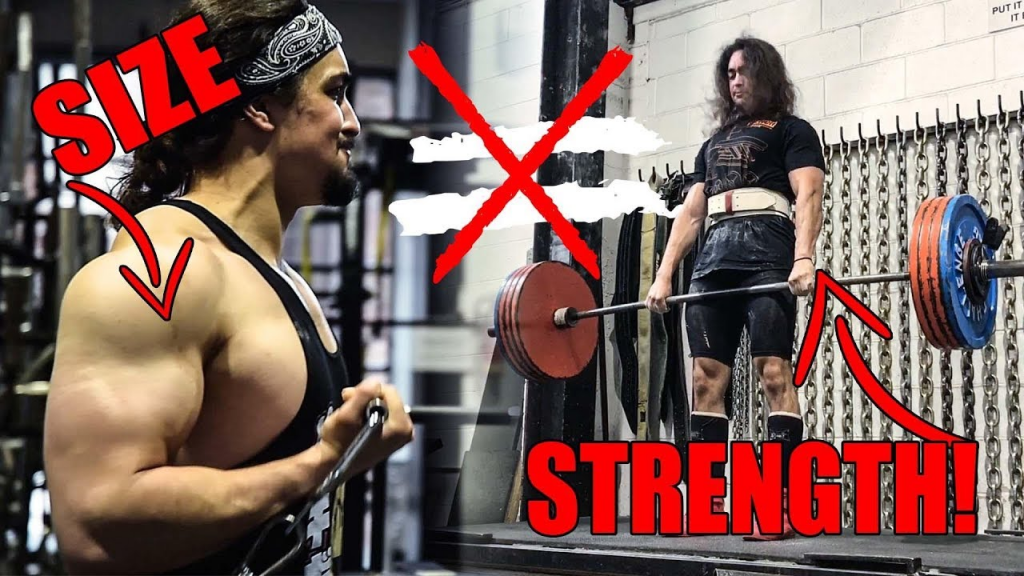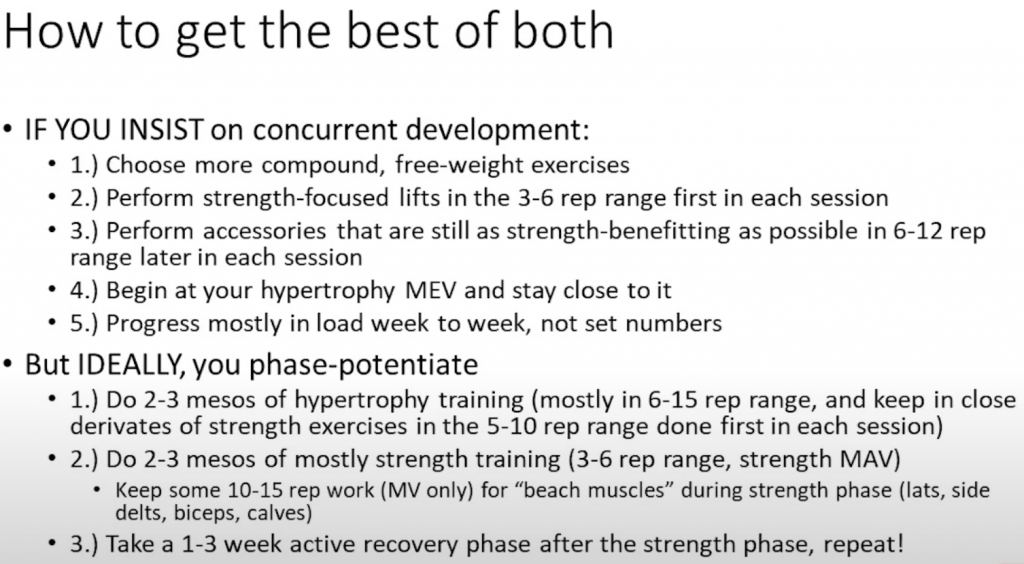Are you hitting the gym to get bigger, stronger, or both? Many lifters assume strength training and size training are interchangeable, but as you progress, the differences become critical—especially if you want to maximize both power and muscle mass. In this guide, we’ll dive into the distinct approaches to strength and hypertrophy training, explore their key differences, and reveal how to strategically combine them for the ultimate bodybuilding results. This is for men serious about sculpting a powerful, jacked physique without wasting time on ineffective methods.
Are Strength and Size Training Really the Same?
At first glance, strength and size training seem similar—you lift weights, you grow, you get stronger. But they’re not identical, especially for advanced lifters. High-level bodybuilders and powerlifters, though both gym regulars, train differently, and their methods reflect their goals. If you’ve spent time in a gym, you’ve likely noticed this: bodybuilders focus on volume and variety, while powerlifters prioritize heavy, low-rep lifts. There’s overlap, but optimized strength training diverges from optimized hypertrophy training—and understanding this can transform your results.

Key Differences Between Strength and Size Training
Here’s where the paths split. Let’s break down the major distinctions to help you decide how to train smarter.
Loading: How Much Weight You Lift
- Strength Training: Focuses on basic strength—the ability to produce force—using a 3–6 rep range per set (e.g., sets of 3, 5, or 6). This builds raw power but doesn’t maximize muscle size quickly.
- Size Training (Hypertrophy): Thrives in a 5–30 rep range, often close to failure. Sets of 8, 10, or 20 spark muscle growth, but they don’t translate directly to strength gains without time and neurological adaptation.
Overlap Note: Sets of 5 or 6 are the sweet spot for both, but sticking to just these reps long-term limits hypertrophy potential due to low variation and accumulating fatigue.
Volume: How Much You Do
- Strength Training: Lowers total volume to avoid excessive fatigue. For example, 8 sets of quad work per week might be maxed out for strength, as higher fatigue impairs performance. You need to be “on” to lift heavy weights effectively.
- Size Training: Embraces higher volumes, like 16 sets of quads per week, because hypertrophy thrives on stimulus, not preparedness. You can train fatigued, and it still works wonders for muscle growth.
Progression: How You Improve
- Strength Training: Progress hinges on increasing load (e.g., 200 lbs to 210 lbs on the bar). More sets or reps help, but load is king for optimal strength gains.
- Size Training: Growth comes from increasing reps, sets, and load, but volume progression (adding sets slowly) drives the most muscle. You start at minimum effective volume (e.g., 10 sets per muscle group) and build toward maximum recoverable volume (e.g., 20 sets), prioritizing volume over rapid load increases.
Example: For strength, adding 15 lbs to the bar with no extra sets is ideal. For size, adding 5 lbs but increasing sets by one is better—same fatigue, but different outcomes.
Frequency and Undulation: How Often and Hard You Train
- Strength Training: Requires fuller recovery between sessions (e.g., 2–3 stimulative sessions weekly with easier recovery days). A typical week might include heavy sets of 2–4 reps on Monday (9 RPE), moderate sets of 4–6 reps on Wednesday (8 RPE), and lighter sets of 2–4 reps on Friday (6 RPE) for practice without fatigue.
- Size Training: Allows frequent, high-volume sessions (e.g., 4 stimulative sessions weekly). You can train the same muscle multiple times with varied reps (e.g., 5–10, 10–20, 20–30) because joints and connective tissues handle lighter loads, and muscles recover locally.
Challenge: Mixing high-frequency hypertrophy with strength’s lower frequency leads to burnout or suboptimal results—you can’t max out both simultaneously.
Exercise Selection: What You Choose
- Strength Training: Centers on compound lifts tied to specific movements (e.g., squats for stronger squats). You stick to 2–3 core exercises, like squats, front squats, or deadlifts, for maximum strength transfer, sacrificing broader muscle development.
- Size Training: Uses diverse exercises (e.g., squats, hack squats, leg presses) to target different muscle regions, boosting overall growth. Isolation moves like cable pushdowns or lateral raises shine for hypertrophy but don’t build strength as effectively.
Trade-Off: Optimal strength exercises (e.g., high-bar squats) may fatigue joints too much for hypertrophy, while top hypertrophy moves (e.g., leg presses) lack the compound load for strength gains.
How to Get the Best of Both Worlds
You can chase strength and size, but not optimally at once. Here’s how to navigate hybrid (concurrent) training or alternate phases for maximum results:
Concurrent (Hybrid) Training Tips
- Exercise Order: Start each session with compound, strength-focused lifts (3–6 reps) while fresh, then add hypertrophy accessories (6–12 reps) after. Use related exercises (e.g., squats followed by high-bar squats or leg presses) for strength transfer.
- Volume Strategy: Begin at hypertrophy’s minimum effective volume (e.g., 10 sets per muscle group) and progress mainly in load, not sets. Keep volumes low (e.g., 10–12 sets weekly) to avoid strength-sapping fatigue.
- Example Session (Quads): Squat 3 sets of 6 reps (strength focus), then leg press 2 sets of 10 reps (hypertrophy boost). Early weekly sessions lean strength-heavy; later sessions add more hypertrophy.

Phase Potentiation: The Ultimate Strategy
For advanced lifters, alternate focused phases for optimal results:
- Hypertrophy Phase (2–3 Mesocycles, ~3–4 Months): Train in the 6–15 rep range, starting sessions with strength-building sets (4–6 reps) but focusing on 10–15 rep hypertrophy work. This builds size while keeping strength primed.
- Strength Phase (2–3 Mesocycles): Shift to 3–6 rep ranges at strength’s maximum adaptive volume (e.g., 6–7 sets weekly). Maintain minimal hypertrophy work (a few sets of 10–15 reps) for muscle preservation, not growth. Active Rest (1–3 Weeks): Recover fully, then cycle back to hypertrophy, repeating the pattern. This maximizes both size and strength over time.
Example Programs:
- Concurrent Quad Session: Squats (3×6 for strength), leg presses (2×10 for size)—balanced but not optimal for either.
- Pure Strength Quad Session: Squats only (5×4)—maximizes strength but minimizes size gains.
- Pure Hypertrophy Quad Session: Squats (2×8), leg presses (3×12)—maximizes size but sacrifices strength progress.
Best Approach: Beginners (under 2–3 years) can blend 5–10 reps for both strength and size effortlessly. Intermediates benefit from concurrent training, while advanced lifters need phased approaches to avoid diminishing returns.
Why You Can’t Have It All at Once
Trying to optimize both strength and size simultaneously often leads to compromise. Advanced hybrid programs falter due to fatigue accumulation or missed stimuli. Splitting phases ensures you hit peak performance in each area, leveraging one to enhance the other over time.
Additional Insight: Pairing your training with proper nutrition—high protein, balanced carbs, and healthy fats—amplifies results. Hydration and sleep are non-negotiable for recovery, ensuring your body adapts to either strength or size demands.
Choose Your Path, Crush Your Goals
Strength and size training overlap for beginners, but as you advance, they demand distinct strategies. If you’re new, stick to 5–10 rep ranges for balanced gains. Intermediates can thrive with concurrent training, mixing strength and size in each session or week. Advanced lifters should alternate hypertrophy and strength phases, using active rest to reset and progress further. Whether you prioritize raw power or massive muscles, this roadmap ensures you train smarter, not harder. Drop your thoughts or questions below, and let’s forge the ultimate physique together!
